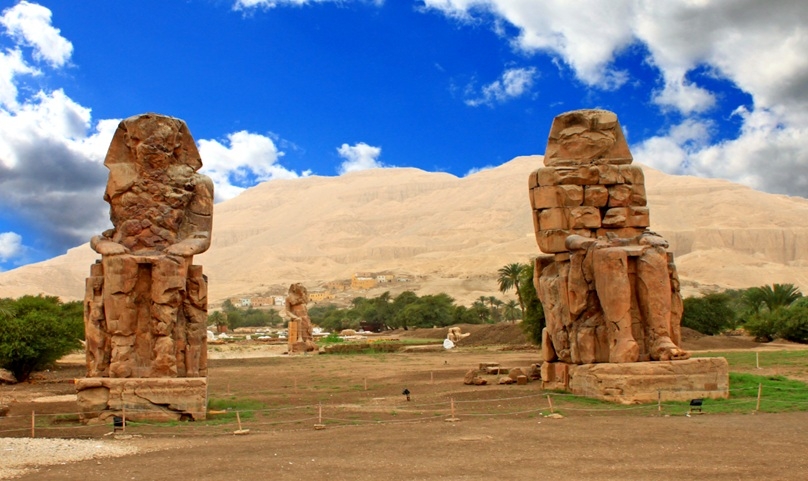Colossi of Memnon
Colossi of Memnon Known as the singing statues or “The Vocal Memnon”, the Colossi of Memnon are two great seated stone statues representing King Amenhotep III, also believed they have been so popular during the Roman period as it is said that the statues sang. This was probably due to the expansion of the stone which warmed up during the day and cooled off at night.
it is believed that tourists from around the Greco-Roman world were trekking across the desert to witness the sunrise acoustic spectacle with these statues, Greek scholars said the reason of this phenomenon that the morning air crossing those cracks saturated with dew, it makes a roaring sound similar to singing prompting to claim that the statue is singing with Sunrise and write this strange phenomenon on the leg of the statue and its base
The two statues were previously located in front of the mortuary temple of Amenhotep III which was destroyed. originally the two statues were identical for each other, They made of sandstone and each one consists of a pedestal and the crown of about 21 meters in height. The statue now represents the pharaoh seated on the throne wearing the royal headdress of the Nemes, protected by the divine cobra. The sides of the colossi have a representation of the god Hapi of the Nile bending together the papyrus plants and the lotus.
unfortunately earthquake in Luxor damaged to both statues, cracks appeared in both statues sides.
the twin statues called (Memnon) because of Greek legend stating that the statues were given their names after a great Ethiopian hero, who participated in the Trojan War called "Memnon" and was killed by "Achilles", one of the Greek heroes of that war. They claimed that this hero who was murdered was conversing with his mother every morning in a sad voice, and claimed also that the dew which was falling at the time, is the tears of the bereaved mother.






